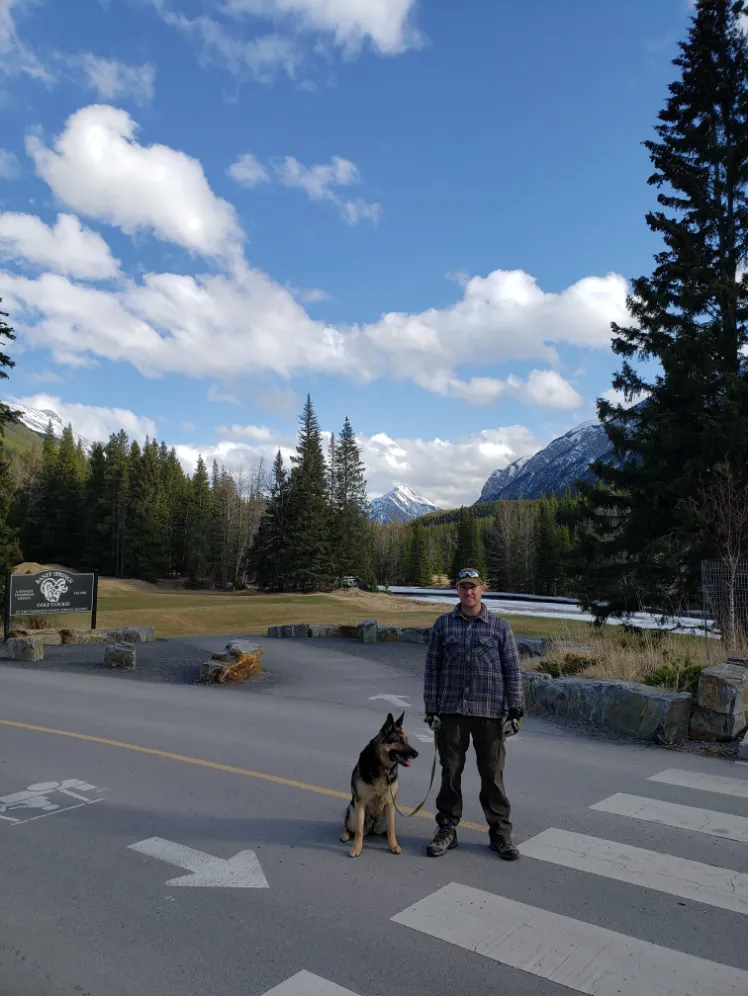Pack Structure
Understanding Pack Structure
All dogs can benefit from pack structure rules in place. Some dogs have to have them in place to fix problems and aggression issues.
Understanding pack rules is coded into a dog’s DNA. It is how they test each other and see where they are in the hierarchy of their pack. This is why some dogs will growl at you when you come near their food dish. Others may growl over resting areas like a bed or couch. Alpha types will escalate to biting to maintain their higher rank.
Reducing Anxiety
On a regular basis we see dogs that are always pacing and whining. The dog lays down and relaxes once the owners understand pack rules. These dogs did not want to be the leader and it stresses them out. Always pacing and anxious. When the dog realizes the humans want to be the leader, the dog can then safely lay down and relax. Breathe a sigh of relief.
Pack Structure Doesn't Exist?
Some trainers say pack structure doesn’t exist. Humans have bred it out of dogs. It’s also argued about on a study of a pack of delinquent wolves. The researcher observed how these wolves had a hierarchy. Opposing scientists stated that packs of wolves are primarily a family with a Mom and Dad. So the study was not representative of a typical “pack of wolves”.
What You Need To Know
What happened in the study, actually happened. There was a hierarchy with non-family wolves. Most people with multiple dogs also have non-family dogs. These dogs can form a hierarchy. Even one dog will form a hierarchy with other human family members. Everyone has seen that Chihuahua being held by Mom and loves Mom but bites anyone else coming nearby. Yeah, that.
So if you are having issues, you likely need to implement pack structure rules. I believe in this because it always works. We solve problems that other trainers can’t because they don’t understand this concept or believe it to be false.
Dog Trainers are Not Good at Asking Questions
When I started training dogs I had a lot of questions and apparently that is not the norm. Most will abide by whatever they are told, no questions asked. I was trained on the reward side of training. I wondered why force training still existed if it was so bad and had so many flaws? Why would people keep doing it?
So I researched it and found very good techniques that help a lot of dogs. It was not as “evil” as I was told. Why doesn’t pack structure exist? What were the rules? I researched them. They made sense to me. What happens if I implement these with dogs? Oh, they listen. Strange. My curiosity gave me an extremely good understanding of opposing views. This helps clients tremendously in solving problems.
Alpha Types
Alpha dogs are those that compete to be the pack leader of their house. They will bite to maintain their position. When the dog thinks they are the leader and doesn’t listen to other family members, we get called in. They may also be aggressive over food or toys. In almost every case a dog that thinks they are Alpha can quickly and easily be brought down to a lower level in the pack structure and be happy there.
Beta Types
Beta dogs are dogs that are not Alpha but would gladly take on that role if they are not under the control of a fair and kind leader. Most dogs fall into the beta type category. Betas will try to challenge and see what they can get away with. For high betas, if rules are not properly followed, they can escalate into the alpha type category.
Omega Types
Omega dogs are dogs that not matter what you do they will always want to follow someone else. Omegas have no desire to be a pack leader. They are the easygoing dogs. These dogs are great for people who are not experienced dog guardians. Since they don’t need to have as much structure in the home. A lot of Bernese Mountain Dogs, Golden Retrievers and English Labs fall into this category. But generally not the hunting version of the Goldens and Labs. Those ones we often see more aggression cases with. Bred to be smarter and more fired up for hunting.
There are several key parts to dog pack structure and they include several different aspects. Your dog will be happier and listen better when these rules are followed. Many people do not know all the rules or miss out on a few key areas. Your dog will determine where they are in the pack by the way you structure these areas.
